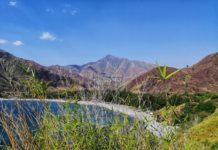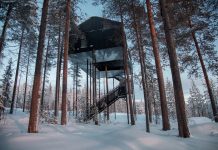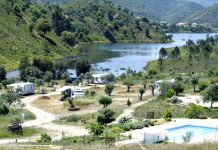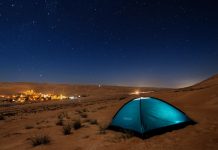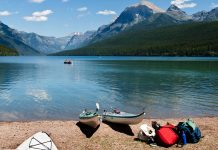South Carolina’s Congaree National Park is one fascinating area that’s located in the central part of the scenic state. It’s one of America’s newer national parks as it was established just in 2003. It’s just over 24,000 acres in total size and offers plenty to do for lovers of the outdoors. It’s been associated with the Congaree Swamp National Monument for many years, which is a South Carolina forest.
However, when it became a national park, the swamp was dropped from the name and it’s no more popular than ever. Congaree isn’t technically a swamp though, since there isn’t standing water in it during most of the year. What it is, in fact, is a floodplain forest which floods approximately 10 times each year. It spreads out northeast from the winding Congaree River and the land is the biggest area of bottomland hardwoods in the nation.
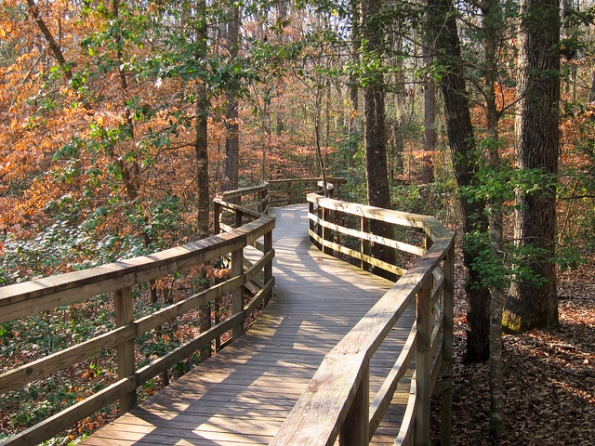 (photo by miguelvieira)
(photo by miguelvieira)
You’ll find cypress trees dripping with Spanish moss and the backcountry is quite lush and is home to several types of animals such as deer, river otters, and bobcats. There are numerous species of birds in the park as well such as the yellowbellied sapsucker. These birds drill holes in the trees and come back a day later to suck the sap out of them. The other constant tapping noise you’ll hear in the forest will be the woodpeckers who are also keeping themselves busy by pecking holes in the tall trees.
In the spring and autumn months, the quiet night air is eerily broken by the calls of the forest’s barred owls. The bottoms of the trees are often covered in glowing fungi and local myths state that the region is filled with wood elves who come out at night and dance around the tree trunks throughout the forest.
The region was named Congaree back in the 18th century after a tribe of Native Americans who used to live there hundreds of years ago. Unfortunately, the Congaree were decimated in the 1700s when a smallpox epidemic swept over the area after it was unknowingly brought over by settlers from Europe.
At the end of the 1800s, the American lumber industry was booming and it looked like the giant hardwood trees of Congaree would fall victim, but most of the forest was left alone since the area is so remote and there wasn’t really a way to transport the fallen trees due to non-navigable waterways. The forest was designated as a national monument back in 1976 and since it was established as a national park it’s named a national natural landmark, as well as a biosphere reserve, and an important bird area.
You’ll be able to enjoy several activities in this tremendous park, including kayaking, canoeing, hiking, and primitive camping. There are also a few guided canoeing and hiking tours available as well as educational and nature study programs.
Congaree National park is an ideal spot to visit at any time of the year, but is particularly pleasant in the spring and autumn time, especially for boaters, kayakers, and canoeists. Some of the most popular trails for hikers are the High and Low Boardwalk Trails, which are about 2.5 miles in length in total. The Weston Lake Loop Trail is about 4.5 miles long and the Kingsnake Trail, which is the best for bird watching is about 11.5 miles in length in one of the most remote areas of the park.

